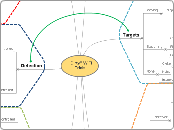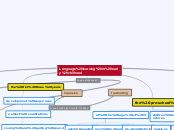Crosslinguistic Interference
Name the character
Type in the name of the character whose change throughout the story you are going to analyze.
Example: Nick Carraway.
Learner Diversity
For us as teachers it is very important to be adapted to all kinds of situations, aspects and students that we may have and that we can understand, handle and implement them in the classrooms so that everyone feels comfortable, included and that they can learn in a better way.
The most important aspects to take into account are:
Learning styles
These styles are:
Kinesthetic
It is related to the consciousness of the person, the position and the movement of the parts of the body through sensory organs in the muscles and joints.
Auditory
It is related to the sense of hearing.
Visual
It is related to the sense of seeing.
Metacognition
Awareness and understanding of one's own thought processes.
Personality
It is well known that if learners feel good, they learn and understand things better, for that reason they should be made to feel good and comfortable in the classroom.
Language and use of language
It is important to know about the language, if we use it well or badly, and if we use it badly, to know what our mistakes are and how to improve them.
Cognitive styles
Life conditions
Some of the learners couldn't have the same resources or materials that other learners could have, and for that reason it's important that their learning be adapted to their lifestyle.
Skills
Learners could have different skills and them should be used in the best way.
Culture or race
We can find learners from different countries or places and we have to make feel them comfortable and included in the classroom.
Gender
In the classrooms you always have to deal with men and women, there may be some with different sexual orientations, but despite this, we must treat and respect everyone equally.
Age
There may be learners of different ages and with different tastes and ways of learning, all of which must be taken into account in the same way.
Learning is effective insofar as it relates to the identities of students, who are diverse and have different realities, therefore, learning differences must be measured and taken into account.
Bilingual children have three stages of acquisition
Stage 0
It is the stage of the transfer and in this, they begin to learn the basics of the other language and associate the words of their native language that resemble those of the language they are going to learn.
Cognates
Words that have a common etymological origin.
Stage 3
There are two lexicons and two syntactic systems, with an adult separation of the languages. Furthermore, a child is already completely "bilingual".
Reinterpretation
Interpreting something in a new or different light.
Stage 2
There are two lexicons, but there is a syntactic system. Is seen the separation of languages because children do not mix their languages so much.
Overdifferentiation
Unnecessary or excessive differentiation of elements in a phonemic, graphemic, or grammatical system, or in their analysis.
Underdifferentiation
An item that exists in the native language is absent in the target language.
Stage 1
There is only one lexicon that contains words from both languages, and a single syntactic system, in addition, children do not have an equivalent translation for a word in the other language.
Signs of cross-linguistic interference at this stage
Split
Divide something into two or more parts, especially along a particular line.
Coalescence
Sound change where two or more segments with distinctive features merge into a single segment.
Is related with the different ways in which one language can affect another within an individual speaker, and typically involves two languages that can affect one another in a bilingual speaker.
Title
Type in the title and author of the literary work that introduces the character.
Example: The Great Gatsby, by F. Scott Fitzgerald.
It can be observed across subsystems of languages, such as:









